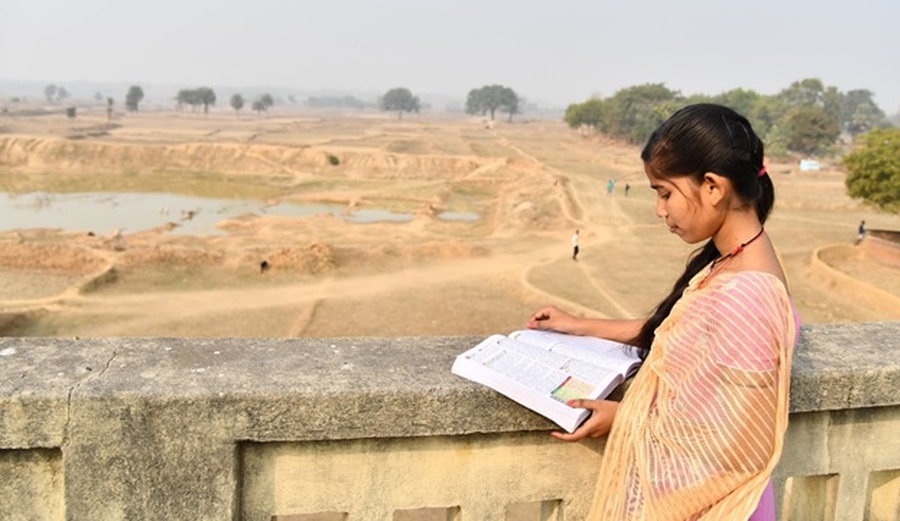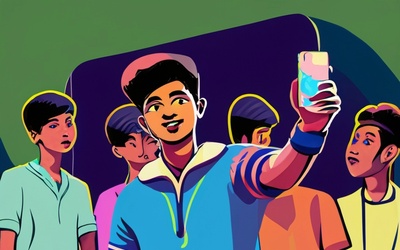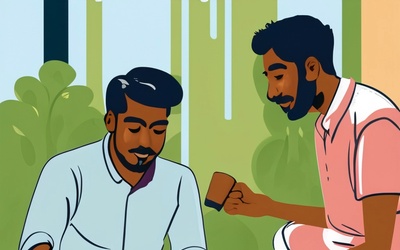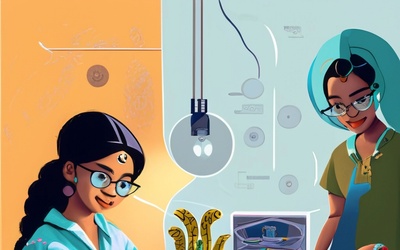PURULIA, India 24 January 2019 –Twelfth
grader Kiran Bauri woke up early on the National Day of the Girl Child, hopeful
and excited. Later that day, she joined 500,000 other girls and women, pouring
onto the streets, joining hands to form a 348 km long human chain. The
chain started at the center of the District’s main town and extended further
beyond the outskirts as more and more women joined. Just one girl wasn’t there,
Kiran’s best friend, Karuna.
Last year, when Kiran discovered that Karuna (name changed to
protect identity) was forced into marriage, she took a risk and reported the
case to police.
When she first found out that Karuna was going to be married,
Kiran alerted other members of the adolescent Kanyashree Club she’s a member of
called ‘Swapnadisha’
(Path of Dreams) that aims to prevent child marriage and ensure girls stay in
school. Together the girls went to see Karuna at home.
The next day Kiran and her friends along with their teacher
informed the Panchayat (village council) who tried to
convince Karuna’s parents to stop the marriage. But they refused.
“Karuna was dejected because her parents had already paid dowry.
They also have two younger daughters to marry,” recalls Kiran. “But, with my
friends from the Swapnadisha club, I was
determined to stop this marriage at any cost.”
Kiran became restless as the wedding day drew closer. “I don’t
understand why girls are considered as burdens to their families. This is not
right, it must change,” she says.
While Karuna was feeling helpless and sad on the morning of her
wedding day, Kiran decided to go ahead report to the police. The local police
and government authorities landed up at Karuna’s place and her parents did not
have any choice but to cancel the wedding.
“We were so happy to stop the marriage,” says Kiran. “I was a little
nervous to go to the police, but I had to do it to save my friend.”
Karuna went on to complete her school education and is currently
studying in college. That’s why she was not able to join the chain. Her
best friend Kiran continues to advocate against child marriage and for girl’s
education.
In many rural communities, child marriage is
more a social norm than an aberration in the eyes of parents who see little
value in investing in their daughters’ education.India has the largest number
of child brides in the world — one third of the global total. Despite a steady
decline in rates of child marriage rates, still, there is a long way to go.
“Many parents often marry their daughters at early age because
they feel it is in their best interest,” shares Swapnodipa Biswas, UNICEF Child
Protection Officer. “In addition, the dowry system still is very common in most
parts of the country.”
In the dowry system the bride's family gives cash or an in-kind
gift to the bridegroom and his family, as a condition of the marriage. The
dowry amount increases with the age and the education level of the girl. Hence,
the “incentive” of the system of dowry perpetuates child marriage even
further.
UNICEF in collaboration with the Government of India is working to
end child marriage in West Bengal and across all states in India. The support
includes capacity building of law enforcement and government officials as well
as community level engagement with influential community leaders and the
media.
Through the Adolescent Empowerment Programme, UNICEF encourages
adolescent girls like Kiran to mobilize and engage other girls like themselves
in their schools and communities through Kanyashree Clubs and learn and support
each other. Creating a social network empowers girls to raise their voices
against any child rights violation, including child marriage.
At present, Kiran is studying hard for her board exam which is due
in February this year. For the time being, she puts aside playing Ludo, a board
game which she likes playing with her older brother Chalam.








